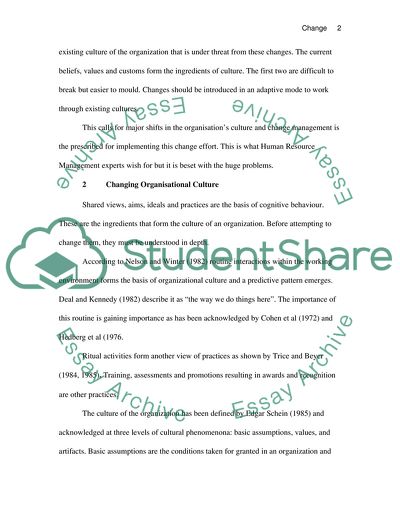Cite this document
(The Need for Change Coursework Example | Topics and Well Written Essays - 2250 words, n.d.)
The Need for Change Coursework Example | Topics and Well Written Essays - 2250 words. https://studentshare.org/human-resources/1711228-the-principle-reason-why-human-resource-management-practitioners-talk-about-organisational-culture-is-because-they-wish-to-change-it-to-what-extent-do-you-thin
The Need for Change Coursework Example | Topics and Well Written Essays - 2250 words. https://studentshare.org/human-resources/1711228-the-principle-reason-why-human-resource-management-practitioners-talk-about-organisational-culture-is-because-they-wish-to-change-it-to-what-extent-do-you-thin
(The Need for Change Coursework Example | Topics and Well Written Essays - 2250 Words)
The Need for Change Coursework Example | Topics and Well Written Essays - 2250 Words. https://studentshare.org/human-resources/1711228-the-principle-reason-why-human-resource-management-practitioners-talk-about-organisational-culture-is-because-they-wish-to-change-it-to-what-extent-do-you-thin.
The Need for Change Coursework Example | Topics and Well Written Essays - 2250 Words. https://studentshare.org/human-resources/1711228-the-principle-reason-why-human-resource-management-practitioners-talk-about-organisational-culture-is-because-they-wish-to-change-it-to-what-extent-do-you-thin.
“The Need for Change Coursework Example | Topics and Well Written Essays - 2250 Words”. https://studentshare.org/human-resources/1711228-the-principle-reason-why-human-resource-management-practitioners-talk-about-organisational-culture-is-because-they-wish-to-change-it-to-what-extent-do-you-thin.


